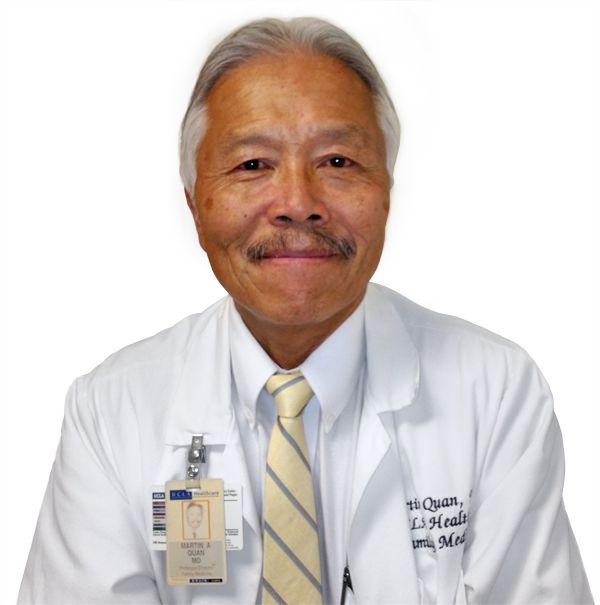Publication
Article
Family Practice Recertification
Single Accreditation Standard for MD, DO Graduate Medical Education: Addition by Subtraction
Author(s):
A single accreditation standard for graduate medical education in the United States will not only bolster training programs for MDs and DOs, but also improve patient care.

Marin Quan, MD
Editor-in-Chief
The difference between an MD and a DO has been a recurring question in healthcare circles for more than a century. Although the short answer is that they are the same, a more precise one is that MDs are awarded their degrees by allopathic medical schools, which number 141 in the United States, whereas DOs are awarded their degrees by colleges of osteopathic medicine, which number 30.
Osteopathic medical schools are distinguished by their commitment to the philosophy and principles established in the late 1800s by Andrew Taylor Still, MD, DO, the founder of osteopathy. Osteopathic medicine emphasizes viewing the patient as a “whole person” and focuses particularly on preventive and holistic measures, like the manipulation of joints and bones to diagnose and treat illnesses. The basic tenets of osteopathic medicine are body unity, self-regulation, and the reciprocal interrelationship between structure and function.
Over time, the curricula of allopathic and osteopathic schools have evolved to become nearly indistinguishable, differing primarily by the latter’s inclusion of clinical training devoted to osteopathic manipulative medicine. Although graduates of osteopathic medical schools have traditionally been eligible to apply for residency training and fellowship programs accredited by either the American Osteopathic Association (AOA) or the Accreditation Council for Graduate Medical Education (ACGME), the converse has not been true, as graduates of allopathic medical schools have been unable to matriculate at graduate training programs certified solely by the AOA, though they are permitted to enroll in residency programs dually-accredited by the ACGME and AOA. The fact that the products of these 2 systems of medical education are otherwise viewed as equivalent becomes evident when considering DOs have been bestowed the same practice privileges as MDs in all 50 states since 1974.
In 2013, the ACGME upset the status quo by announcing that all prerequisite clinical training required by an ACGME-accredited residency or fellowship training program had to be completed in an ACGME-accredited residency training program, an ACGME International-accredited residency program, or a Canadian residency program accredited by the Royal College of Physicians and Surgeons of Canada (RCPSC), effective with the implementation of its 2015 common program requirements. In other words, the roughly 45% of DOs who complete their medical training in AOA internship and residency programs would no longer be given credit for their AOA training — and, therefore, would be required to repeat those years of training — if they were to transfer into an ACGME residency or fellowship program in 2015 or thereafter.
This obviously created quite the stir, which is why the ACGME, AOA, and American Association of Colleges of Osteopathic Medicine (AACOM) jointly announced on February 26, 2014, that the AOA would cease offering accreditation to osteopathic graduate medical education (GME) programs, while the ACGME would assume responsibility for accrediting all GME programs in the United States under a single system beginning on June 30, 2020. The organizations also announced AOA-accredited training programs will be given the opportunity to transition to ACGME accreditation starting on July 1, 2015. In addition, MD and DO graduates who have achieved the prerequisite competencies will be eligible for seamless access into and between any GME programs.
Although osteopathic training programs will be certified by the ACGME in the future, they will likely stay true to their roots and continue to instruct residents in the clinical application of osteopathic manipulative medicine. As a result, 2 new osteopathic review committees will be created to set standards for programs seeking osteopathic recognition, and both the AOA and AACOM will be able to nominate members for the ACGME’s Board of Directors. Furthermore, the growing focus on primary care in the United States is consonant with the philosophical premise of osteopathy and its emphasis on a holistic and preventive approach to healthcare. Thus, the unification of the 2 systems does not figure to spell the end of osteopathy.
A single accreditation standard for GME in the United States will not only bolster training programs for MDs and DOs, but also improve patient care. It will also facilitate a more uniform, competency-based curriculum in all US medical residencies and fellowships and eliminate the administrative burden stemming from 2 separate GME systems. At the very least, the new system holds promise for simplifying answers to questions concerning the difference between an MD and DO.
Martin Quan, MD
Editor-in-Chief
Martin Quan, MD, is Professor of Clinical Family Medicine and Director of the Office of Continuing Medical Education at the David Geffen School of Medicine at UCLA. He is also a member of the Education Advisory Board and consultant to the Committee on Continued Professional Development of the California Academy of Family Physicians and a member of the Kidney Learning System Advisory Board of the National Kidney Foundation. In the past, Quan has served as Program Director of the UCLA Family Practice Residency Program, Co-Director of the UCLA Pre-Doctoral Program in Family Practice, Editor-in-Chief of Clinical Cornerstone, and Vice Chair of the Residency Review Committee in Family Practice for the Accreditation Council for Graduate Medical Education (ACGME).






